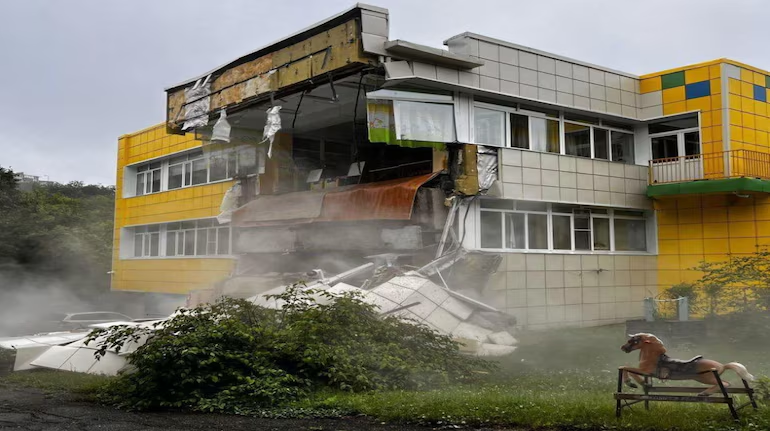On July 30, 2025, a powerful 8.8-magnitude earthquake rocked Russia’s Far Eastern Kamchatka Peninsula, sending shockwaves across the Pacific and promp
On July 30, 2025, a powerful 8.8-magnitude earthquake rocked Russia’s Far Eastern Kamchatka Peninsula, sending shockwaves across the Pacific and prompting tsunami warnings as far away as Japan, Hawaii, and Chile. The quake, one of the strongest recorded this century, struck at approximately 11:25 AM local time, with its epicenter located 125 kilometers east-southeast of Petropavlovsk-Kamchatsky, a city of about 180,000 people. Its shallow depth of 19.3 kilometers amplified its destructive potential, according to the U.S. Geological Survey.
Residents of Kamchatka described scenes of chaos as the ground shook violently. “People ran into the streets—some in slippers, others holding their children,” said Vasily Berezhnoy, a lifelong resident of the region, in an interview shared by recent reports. Videos circulating on social media showed furniture toppling, ceilings collapsing at Yelizovo Airport, and chapel bells ringing unaided. In Petropavlovsk-Kamchatsky, a kindergarten sustained damage, though no fatalities were reported. Several injuries occurred, including at the regional airport, where one person reportedly jumped from a window in panic, according to local health officials.
The earthquake triggered immediate tsunami warnings across the Pacific. In Russia’s Kuril Islands, the port town of Severo-Kurilsk, home to 2,500 people, was inundated by waves up to 4 meters high, flooding buildings and prompting the evacuation of nearly 3,000 residents to higher ground. Japan’s Meteorological Agency issued alerts for its Pacific coast, with waves of up to 1.3 meters recorded at Kuji Port in Iwate prefecture. Nearly 2 million people in Japan were urged to evacuate, though warnings were later downgraded. In Hawaii, tsunami waves reached 1.7 meters, but officials reported no significant damage, allowing evacuees to return home by evening.
The quake’s impact extended far beyond its epicenter. Tsunami advisories were issued for parts of California, Alaska, and Mexico, with waves of 1.6 feet observed in Arena Cove, California. French Polynesia’s Marquesas Islands braced for waves up to 2.5 meters, though later reports indicated smaller-than-expected surges. Chile upgraded its tsunami warning to the highest level, and Ecuador’s Galapagos Islands saw precautionary evacuations. The Pacific Tsunami Warning Center emphasized that sea level changes and strong currents could persist for over a day, urging coastal residents to remain vigilant.
Experts attribute the earthquake to the Pacific Ring of Fire, a seismically active zone where the Pacific Plate subducts beneath the North American Plate. “This megathrust fault makes Kamchatka particularly vulnerable,” noted Shinichi Sakai, a seismologist at the University of Tokyo, in a recent statement. The quake is the strongest in the region since 1952 and ranks among the eight most powerful globally since 1900. Aftershocks are likely, though their intensity is expected to decrease, according to the Russian Academy of Sciences.
The eruption of a nearby volcano, reported shortly after the quake, added to the region’s challenges. The Russian Academy of Sciences described “burning hot lava” descending the volcano’s western slope, though no immediate threat to populated areas was reported. Emergency services in Kamchatka remain on high alert, with medics seen stabilizing patients during the tremors in one widely shared video.
As the Pacific Rim recovers, the earthquake underscores the region’s vulnerability to natural disasters. Kamchatka’s remote location limited the human toll, but the event serves as a reminder of the need for robust early-warning systems and preparedness. Japan, still haunted by the 2011 Fukushima disaster, evacuated workers from the Fukushima nuclear plant as a precaution, with no irregularities reported. Across the Pacific, communities are assessing minor damages while bracing for potential aftershocks.
For now, residents of Kamchatka and beyond are breathing a cautious sigh of relief. The swift response of emergency services and international coordination likely averted a greater catastrophe. As one Hawaiian official put it, “We’ve not seen a wave of consequence, which is a great relief.” Yet the event is a stark reminder that the Earth’s restless plates demand constant vigilance.



COMMENTS